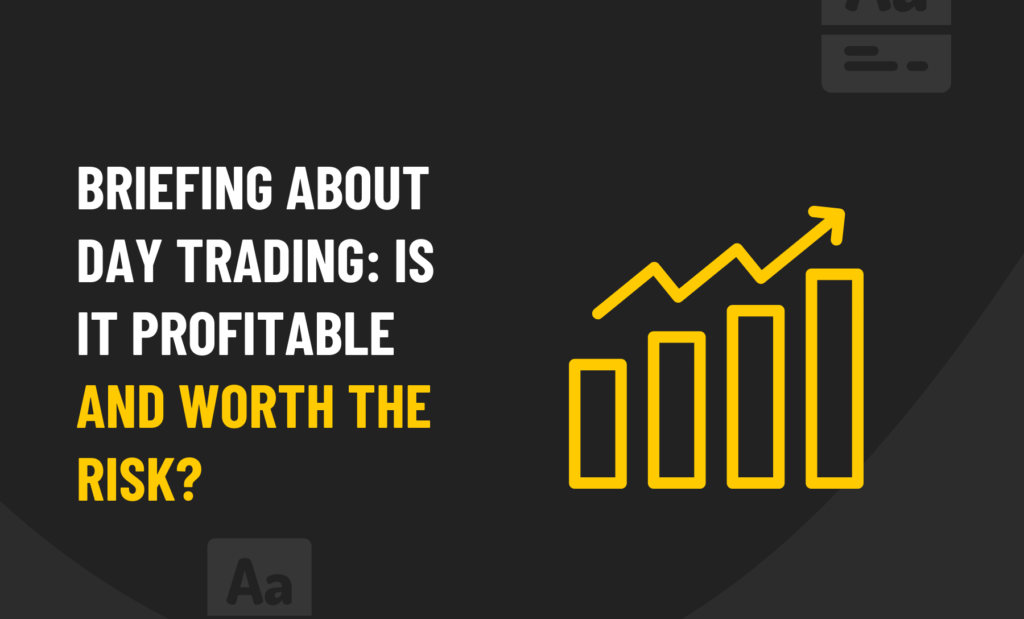
In today’s market, there are a lot of people who believe that day trading is the key to financial success. While it may be true that some people have been able to make a lot of money by trading stocks every day, this is not always a safe investment strategy. In fact, day trading can be perilous and can lead to losses if you don’t know what you’re doing.
What is Day Trading?
Day trading is typically a shorter-term investment strategy that involves buying and selling stocks within a few minutes or hours. This is a risky investment strategy that involves buying and selling securities on the same day. This type of trading is generally considered to be speculative, and it can lead to large losses if the market turns against you.
The goal is to make quick profits by buying low and selling high, but there’s also a risk of losing everything you’ve invested. You can lose money even if the market is going up, as stock prices can suddenly drop because of news events or other factors.
Reminders to Earn Money Through Day Trading
Day trading is a risky investment strategy that can lead to significant losses. However, there are also opportunities for profits if you know what you’re doing. Before you start day trading, make sure you understand the risks involved and take the time to learn about the different exchanges and markets. If you’re confident in your skills and prepared to take on some risk, day trading can be a lucrative way to make money. Be sure to have a plan for how you’ll handle potential losses and stay focused on your goals while day trading.
Risks of Day Trading

There are many risks involved with day trading, the most notable of which is the risk of loss. The average day trader loses almost three-quarters of their initial investment, so it’s important to be very aware of what you’re doing and take precautions to protect yourself.
Another risk is the potential for getting drawn in by the market’s momentum. If you buy stocks at a low price and the market rises, it’s difficult to sell without sacrificing profits. This can lead to a loss of money even if the market eventually drops back down.
Finally, day trading also involves risks related to liquidity. If there are few buyers and sellers available on a particular stock or commodity, prices may be higher than they should be because there is less competition.
Common Factors for Incurring Losses on Day Trading
FOMO and FUD
FOMO (fear of missing out). The anxiety that comes with the fear of not being part of something exciting or important can often be motivating.
FUD (fear, uncertainty, and doubt)? FUD is often a reaction to feelings of anxiety. It’s a common tactic used by those who want to keep others from making significant investment decisions. The purpose of FUD is to create uncertainty and discourage others from investing.
The two terms are related, but they have different effects. FOMO can be motivating because it creates an incentive to act quickly. However, if you’re feeling anxious about what you’re doing, FUD can make things worse by discouraging you from making any investment decisions at all.
Overemphasising technical analysis
Unfortunately, some traders over-rely on technical analysis and end up losing money. Here are three common factors that can lead to losses:
1) Focusing on short-term price movements instead of looking at the bigger picture. This can be dangerous because it leads you to chase market trends instead of sticking to your plan.
2) Getting too attached to one security or market trend. If the trend changes, you may end up with big losses.
3) Not being well-versed in TA basics such as buy/sell signals and support/resistance levels.
Lack of automation
Lack of automation can lead to losses on day trading. Common factors that contribute to these losses include overconfidence, mistakes, and fatigue. Overconfidence is caused by the belief that you know more than you do and that your trading strategies are foolproof. This can lead you to make assumptions about the market that are incorrect. Mistakes are made when you misinterpret signals from the market or when you don’t use proper stop-losses and take profits. Fatigue can be a major contributor to loss because it slows down your reaction time and makes it harder to stay focused on the task at hand.
Conclusion
FAQs
What is the difference between day trading and swing trading?
Day trading is trading where you buy and sell securities on the same business day. Swing trading is a different form of trading where you buy and sell securities over a period of several days or weeks.
Can I eventually be successful in day trading as I gain experience?
No. Day trading is a highly competitive field with many experienced traders in the market. It is impossible to be successful in day trading as you gain experience because there are many other traders who have been trading for a long time and have gained more experience than you.
What are some tips for day trading?
Day trading is a risky proposition. It’s important to be aware of the risks before you trade. Here are some key points to keep in mind:
1) Day trading is a high-risk activity. You can lose money quickly if you don’t know what you’re doing.
2) Before you start day trading, make sure that you have all the information you need about the markets and the products that you’re trading. Read financial statements and industry blogs to get an understanding of the market conditions and how products are performing.
3) Always use stop losses and take profits when trading stocks and commodities. Use common sense when setting these limits, but be careful not to overshoot them. If things go wrong, your losses could be significant.
4) Be aware of news events that may impact the markets.



